
A PT’s Guide To Skipping Your Way To Better Fitness
Burn Serious Calories
Skipping provides a full-body workout that burns serious calories. As fitness guru Penny Weston explains, “What makes skipping stand out to other forms of cardio is that it’s a fantastic calorie burner,” she tells SL. “Skipping can burn up to 1,300 calories per hour, whilst jogging at a moderate pace burns around 350 calories.” Studies also show it has the potential to increase fitness levels just as much as other forms of cardio. In fact, research shows skipping for just ten minutes is the equivalent to running for 30 minutes, making it a fantastic and efficient way to workout. Plus, unlike a HIIT class, which can quickly take its toll on your body, skipping creates less wear and tear on the joints, meaning you can do it more frequently, and reap the benefits.
Enjoy A Full-Body Workout
Regularly incorporating a skipping rope into your regime will benefit your posture. Plus, one you get the hang of it, you’ll start to feel it in your core, biceps, pecs, delts, lats and calves. Once you’re feeling confident, you can even invest in a weighted skipping rope, which will engage more muscles in the upper body, helping tone your arms, shoulders and back.
Think About Form
As Keon Ghaharian, founder of Dope Ropes, explains, technique is everything when it comes to skipping. “Your arms should be kept tight to the side of your body, your elbows should point backwards, and your wrists should be at around hip height. Ensure you rotate your wrists, too – lots of beginners have stiff wrists but if your arm positioning is on point then the wrist action will come naturally. Your jumps should be no higher than one to three inches off the floor to only allow enough room for the thickness of the rope to pass under, and the body should ideally make a straight line in the air from crown to foot.” Lauren Flymen – @Lauren.Jumps on Instagram, who also just launched a new HIIT skipping programme, JUMP! on wellness and fitness app TRUCONNECT by TV.FIT – also says to keep things simple. “Beginners tend to over-complicate skipping, and most beginners hold their hands out too wide, which actually makes things harder. If this sounds familiar, make sure your rope isn’t too long, otherwise you’ll end up working your shoulders more than you need to, meaning you’ll tire a lot quicker. It’s also vital to realise that a big jump isn’t necessary – smaller jumps and making sure your feet are close to the ground means the rope won’t catch on your calves.”
Level Things Up
Once you’ve got the hang of things, think about speeding things up and incorporating some footwork, says Jake Barton, current undefeated professional light heavyweight boxer. “The easiest way to level things up is to change your skipping speed,” he says. “The faster you skip, the harder you’ll work. You can then start to include some skills, such as double jumps, cross overs, raising one knee, kicking out a leg, and splitting your stance. All of these skills take time to master but once you’ve cracked it, they can be a fantastic addition to any skipping workout.”
Slot It Into Your Routine
The beauty of skipping is its versatility, says personal trainer Joshua Davies. “You could do a basic skipping session, aiming for eight minutes of continuous skipping followed by two minutes of rest, repeated three times. Or if you are looking for more of a challenge, try a Tabata-style workout, which is great fat loss. This would comprise of jumping for 20 seconds followed by ten seconds of rest, repeated for around 20 minutes. You can also incorporate skipping into a circuits routine if you wanted to mix things up – if you’re short on time, try 40 jump rope skips followed by 30 bodyweight squats, a 20-second wall sit and ten push-ups, repeated for three rounds. Or to really get your heart rate going, do 30 seconds each of squats, skipping, mountain climbers, high knees, press ups and burpees, followed by two minutes of rest, repeated for four rounds.”
THE FOOTWORK TO MASTER…
If you want to advance your skipping, here Lauren shares her top tips for mastering some more advanced footwork…
Toe Catches: “These are a lot trickier than they look but will enable you to get used to the movement of the rope. Start by skipping normally, but instead of jumping over the rope, lift your toes and try to catch the rope underneath your feet. By doing this, you will get used to the feel, weight and speed of the rope before incorporating the jumping aspect.”
Penguin Jump: “These jumps help coordinate the timing of your jumps with the rope, and you don’t actually need a rope to practice them. Instead, when you jump, tap your hands on the side of your thighs which will then replicate the timings of the flick of the rope underneath you. Keep your body straight, pushing off your toes without kicking your feet back.”
Basic Bounce: “The basic bounce combines the skills of the penguin jump and toe catches. It’s common when you start skipping to widen your arms, but try to keep them in to your waist, and think about keeping them down, too.”
Running Step: “Before attempting the running step, it’s important to have your basic bounce nailed down. The running step will get you used to hopping on one leg, so that’s where you should start. Following that, you want to get used to swapping legs, so try to do this frequently as you progress. Once you’ve mastered this, you’ll be able to run consistently using a rope.”
THE WORKOUTS TO TRY…
IF YOU HAVE 10 MINUTES:
Phoenix Nation Jump Rope Workout
At just ten minutes long, this workout can easily be slotted into a circuits routine. It also gives clear tips for technique for each move, making it perfect for beginners.
Rachel Gulotta Fitness 10-Minute Jump Rope Workout
With studies showing skipping for ten minutes is the equivalent to running for 30 minutes, Rachel’s short-but-sweet workout is one to try.
IF YOU HAVE 20 MINUTES:
Sydney Cummings Jump Rope Workout
Sydney’s high-energy YT videos kept many of the SL team going during lockdown, and this speedy skipping workout is no exception.
Holly Dolke Jump Rope Weight Loss Workout
Perfect for skipping novices, this fuss-free workout combines simple skipping moves with bodyweight exercises for a full-body approach.
Rachel Gulotta Fitness Jump Rope HIIT
This workout may be just 20 minutes, but it’ll get your heart rate soaring thanks to a variety of moves and expertly timed intervals.
IF YOU HAVE 30 MINUTES:
Full-Body Skipping HIIT Workout With Krissy Cela
Krissy is the queen of results-driven online workouts and this high-intensity session is the perfect way to start your day.
Phoenix Nation Jump Rope Workout For Beginners
This interval-based workout combines a variety of moves – think side-straddles and boxer steps – to work every muscle.
WHO TO FOLLOW:
@Lauren.Jumps: Skipping sensation Lauren took up skipping in lockdown and now inspires her 309k Instagram followers to get fit and hone their technique.
@Rush_Athletics: If you’re looking for expert tutorials and skipping hacks, Rush Athletics is the one to follow. They also sell their own ropes, which are legendary in the industry.
@OfficialJumpRopeDudes: Dan and Brandon – aka the Jump Rope Dudes – lost 130lbs collectively after taking up skipping, and their YT channel now has over 1 million subscribers.
@JumpRopeSisters: Bex and Rach are seriously up there in the world of skipping – 20x British champions, European and world medallists, they know a thing or two about jump rope.
@Dope_Ropes: Dope Rope’s striking neon skipping ropes have become something of a cult product in the last year. Follow them for workout inspo and fancy footwork.
WHAT TO LOOK FOR IN A SKIPPING ROPE…
Your level of expertise should dictate the type of rope you choose. As Keon advises, “Avoid light speed ropes if you’re a beginner, and instead opt for a beaded rope, which moves slower through the air, making it easier to practice.” If you’re looking to level things up, try a PVC rope, which move faster through the air, making them excellent for speed and faster footwork. It’s also worth thinking about handle types – beginners should look for a rope with short handles, which force better hand positioning, but you can try longer handles once you’re feeling more confident. “A longer-handled rope will make it easier to perform moves like crosses, crossover variations and more complex combinations,” says Keon.
Shop the experts’ favourite skipping ropes here…
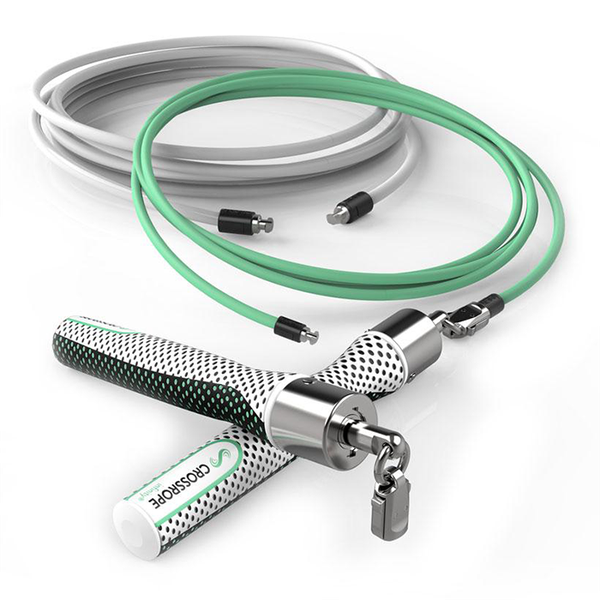
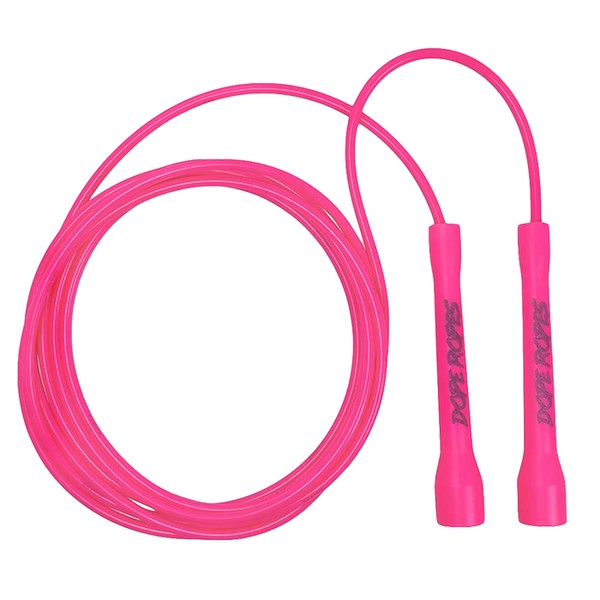
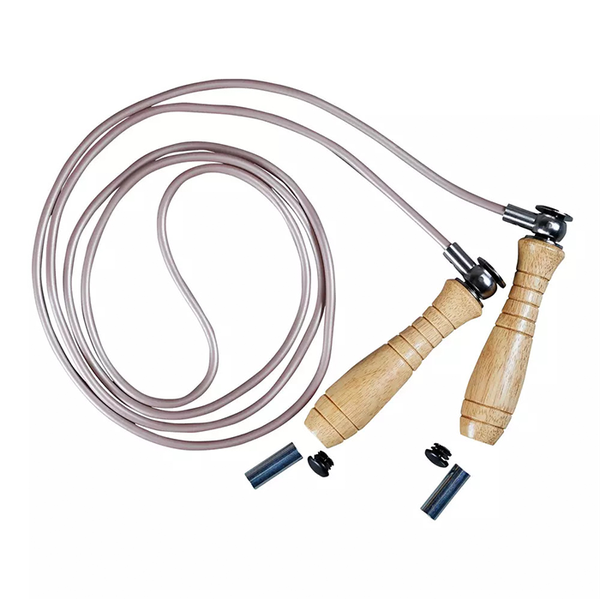

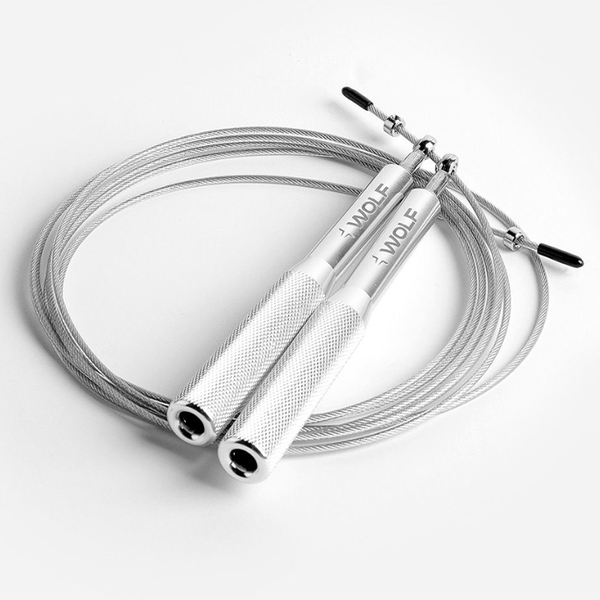
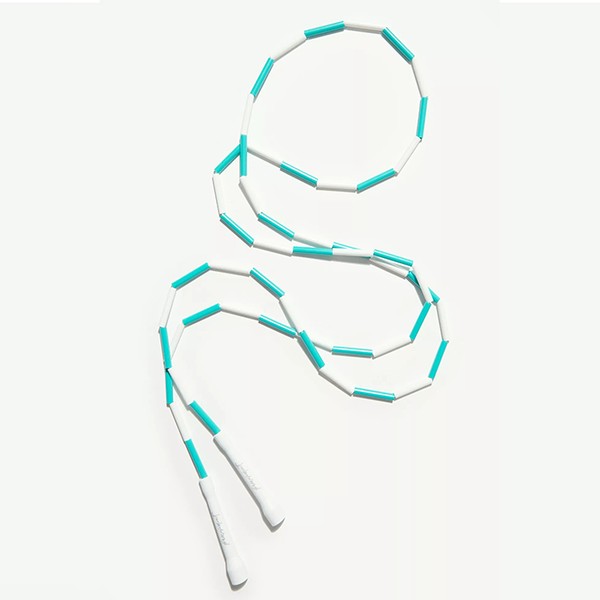


For more information visit WelcomeToMade.com, DopeRopes.co.uk and JoshuaLukeDavies.com.
Lauren Flymen and Josh Tennant have recently launched a new HIIT skipping workout programme available exclusively on TRUCONNECT by TV.FIT. Visit TruConnect.Fit for more information.
DISCLAIMER: Features published by SheerLuxe are not intended to treat, diagnose, cure or prevent any disease. Always seek the advice of your GP or another qualified healthcare provider for any questions you have regarding a medical condition, and before undertaking any diet, exercise or other health-related programme.
DISCLAIMER: We endeavour to always credit the correct original source of every image we use. If you think a credit may be incorrect, please contact us at info@sheerluxe.com.

